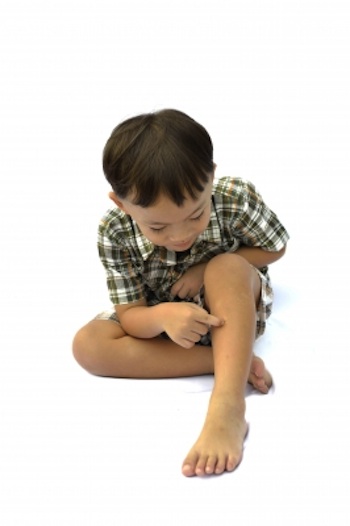How the Government Shutdown Affected Kids and Moms
Mom Trusted reports on how the government shutdown affected kids and moms here:
The government shutdown affected kids and moms as it blew through the country, shutting down federally funded programs left and right on the first of October. Many federally funded Head Start programs, which offer free preschool to kids under five, ran out of funding at the end of September. Those that couldn’t afford to stay open through other channels of income were forced to send preschoolers home indefinitely. Head Start programs in Florida, Alabama, Connecticut and Mississippi were among those forced to close, hitting 3,200 preschoolers by the day after the shutdown.
The government shutdown affected kids and moms of all ages, not just those in preschool. Programs labeled “non-essential” were the ones forced to close with the shutdown. Among the many hit was the WIC, the Special Supplement Nutrition Program for Women, Infants and Children. The WIC provides healthy food for low-income moms and moms-to-be with children under five years old.
Nearly nine million women and children participate in the program and receive an average monthly benefit of $45. By providing healthy food to children, the program hopes to cut medical costs in the future. For every $1 spent on WIC, the program will save over $4 in medical bills.
Many program workers and parents who depend on WIC argue that the program is the opposite of “non-essential.”
Sources:
-“Shutdown threatens nutrition for mothers, children” CNN Money: http://money.cnn.com/2013/09/30/news/economy/shutdown-wic/index.html
-“WIC support for moms, babies threatened during shutdown” CBS News: http://www.cbsnews.com/8301-250_162-57605501/wic-support-for-moms-babies-threatened-during-shutdown/
-“Low-income moms and infants will see support disappear in a shutdown” Think Progress: http://thinkprogress.org/economy/2013/09/30/2701131/shutdown-wic/
-Photo courtesy of adamr/freedigitalphotos.net
Ringworm on Kids
Have you noticed an itchy rash, leaving circles on your child’s body? It could appear on their chest, stomach, arms, head, toes or anywhere in between. It could be the size of a dime or a dinner plate, depending on how much they’ve been scratching. The most distinctive feature is the ring-shaped rash, which is likely ringworm. Here’s what you need to know about ringworm on kids:
What is it?
Despite the gross name, a child with ringworm does not have a parasite in their skin. ringworm is actually a fungus. Infact, it’s the same fungus called athlete’s foot when on the feet, or jock itch when found on the groin and upper thighs.
How can they get it?
Ringworm is contagious and spread from person-to-person, as well as by many animals such as cats. It can even be picked up in the soil.
Symptoms
In addition to the ring-shaped pattern, some kids develop a low-grade fever with the fungus. If spread to the finger or toenails, the nails become thick and yellow. The scalp can also be infected with ringworm and will often develop an itchy, flakey patch. When just starting out, small, itchy bumps pop up and eventually spread to the ring pattern. Scratching can speed up the process by aggravating and spreading the fungus.
Treatment
Antifungal creams are available for treatment at your common drugstore. Topical ointments work for lesser cases. If the fungus has spread dramatically or the topical creams don’t seem to be working after about a week, visit your doctor. Doctors can prescribe antifungal medication to help treat ringworm on kids. Treat right away to avoid spreading it to other family members or children at the childcare center or school.
Prevention
Avoid ringworm by showering after sports or touching animals. Have the kids wear sandals in public restrooms and showers.
Sources:
-“Ringworm” Teens Health: http://kidshealth.org/teen/infections/fungal/ringworm.html
-“No-Panic Guide to Kids’ Cooties” Parents.com: http://www.parents.com/health/bug-bites/no-panic-guide-to-kids-cooties/?page=5
-“Ringworm” Baby Center: http://www.babycenter.com/0_ringworm_10884.bc
-Photo courtesy of arztsamui/freedigitalphotos.net
The Healthy Lunchtime Challenge 2013
Fifty-four kids, ages 8 to 12, attended the second annual State Dinner, hosted at the White House by Michelle Obama. They were there on July 13 to celebrate winning the Healthy Lunchtime Challenge. At dinner, some of the winners’ healthy recipes, submitted by the kids that were affordable and easy, were served to the guests. A child and guardian from each state attended.
There were 54 winning dishes in total (one from each of the states and each U.S. territory). The recipes hit a wide variety of flavors, ingredients and courses. Some salad favorites included Colorado’s Nicholas Hornbostel de Moura e Silva’s sushi salad and Ingrid Gruber’s, from D.C., Inga Binga’s Salmon Salad. North Carolina’s Vijay Dey won with her famous spring rolls and Campbell Kielb, from Virginia, made the list with her orange-chicken lettuce wraps.
The winners were selected from over 1,300 entries. They shined and dined with one another, making new friends and supporting healthy eating around the country. The dinner was set to mirror official State dinners, allowing the kids to see what it’s like to be a world leader. Michelle thanked the kids and parents for their hard work and healthy leadership skills. President Obama even made a surprise visit.
The Healthy Lunchtime Challenge was founded to compliment Mrs. Obama’s Let’s Move campaign. Let’s Move focuses on making healthy food more available, in both schools and homes, and encouraging kids to stay physically active. The First Lady’s initiative is meant to fight obesity and teach healthy lifestyles in children, helping them lead healthier lives.
To try some of the winning recipes for yourself, download the 2013 Healthy Lunchtime Challenge Cookbook for free.
Sources:
-“Learn the Facts” Let’s Move: http://www.letsmove.gov/learn-facts/epidemic-childhood-obesity
-“Announcing the winners of the 2013 Healthy Lunchtime Challenge” http://www.recipechallenge.epicurious.com/
-“2013 Healthy Lunchtime Challenge Cookbook” http://www.epicurious.com/images/pdf/TheEpicuriousHealthyLunchtimeChallengeCookbook2013.pdf
-“The 2013 Kids’ State Dinner” Let’s Move: http://www.letsmove.gov/kids-state-dinner
-“The 5 Best Moments from the 2013 Kids’ State Dinner” The White House Blog: http://www.whitehouse.gov/blog/2013/07/09/5-best-moments-2013-kids-state-dinner
-Photo courtesy of Damian Brandon/freedigitalphotos.net
Keeping the Bugs at Bay: How to Keep Kids Safe from Bug Bites
Even though they’re small, bug bites can be a big problem. Not only are they downright annoying, but some insect bites bring dangerous diseases. Mom Trusted is here to break down different insects and their danger factors. Plus, we’ll tell you how to keep them away from your little ones. Here are a few tips on how to keep kids safe from bug bites:
Mosquitos:
These buggers are drawn to human breath and sweat, making children running around outdoors the perfect targets. Over time, our bodies begin to desensitize to the bites so kids are more likely to have worse reactions to mosquitos.
Risks: At best, mosquito bites are annoying and itchy. At worst, the insects can carry serious diseases such as malaria, West Nile virus and yellow fever. If you suspect any of these, see a doctor immediately.
Prevention: There are a variety of repellents available to keep mosquitos at bay. Always avoid DEET-based products on babies under six months old. If you do use DEET, or a repellent containing Picaridin, on your kids, make sure not to spray any on their hands or faces.
Treatment: Apply an anti-itch cream to help keep kids from scratching. Remind them that the more they scratch, the itchier the bite will get.
Ticks:
Ticks are gross parasites that attach to humans and survive by sucking their blood. They’re most common in heavily wooded areas and places with tall grass. Animals are also often tick carriers. Two of the most common types include wood ticks and deer ticks.
Risks: Wood ticks are much larger than deer ticks, but are not as likely to carry harmful diseases. Ticks of all kinds can carry several types of diseases including lyme disease, Babesiosis, Tularemia and Rocky Mountain Spotted Fever. If you or your kids start feeling achy, feverish or develop a rash after a tick bite, see a doctor right away.
Prevention: Cover your kids’ legs and ankles with pants and long socks when they’re playing in tall grass and heavily wooded area. DEET-based insect repellents also protect against ticks, but should not be used on babies.
Spiders:
A variety of spider bites can be very dangerous. The black widow, brown recluse and hobo spiders are all venomous ones that live in the U.S.
Risks: Black widows’ two-puncture bites release a venom that spreads pain to the victim’s chest, stomach and throughout the entire body in some cases. The venom from a brown recluse begins to kill the skin, which is why some refer to it as “flesh-eating.” Hobo spiders’ bites turn into slow-healing wounds over time. Head directly to the doctor’s office if you spot any of these symptoms.
Prevention: Spiders love to hide in quiet, undisturbed areas in both the woods and even in homes. Teach your children to avoid spiders and if you find them living in your house, call an exterminator to treat the area.
Sources:
-“Mosquito bites” Mayo Clinic: http://www.mayoclinic.com/health/mosquito-bites/DS01075
-“Tick-borne diseases” CDC: http://www.cdc.gov/niosh/topics/tick-borne/
-“Venomous spiders” CDC: http://www.cdc.gov/niosh/topics/spiders/
-Photo courtesy of foto76/freedigitalphotos.net
Mommy Math: Kids and ADHD
ADHD has been receiving more and more attention in the media as diagnosis numbers continue to rise. This disorder affects children more than adults by nearly eight times and boys are two times more likely to be diagnosed with ADHD than girls. In our most recent Mommy Math, we dug into the math surrounding the disorder:
Animal Themed Snacks
Teaching your kids about animals? There’s no better way than using tasty treats. Check out these fun, animal themed snacks:
Bear S’mores
Put a fun twist on s’mores by making them into little bears. Break the graham cracker in half so that you have a square. This will be the head. Take two mini marshmallows and melt them so that you have two gooey dots in the two upper corners of the square. These are the ears. Then take a regular sized marshmallow and melt it near the bottom center of the square. Add a chocolate chip on top for the nose and use chocolate syrup to draw the mouth on the big marshmallow. Place two chocolate chips under the ears to represent the eyes. Then chow down on your bear-themed s’mores.
Animal Pancakes
You can create virtually any animal from giraffes to bees out of pancake batter. All you need is a squirty tube to help you create intricate designs on the pan (think the dressing squirters at Subway) and your regular old pancake batter. If you want to get super creative, add a few drops of food coloring to the batter to make peacocks blue and green or ladybugs red. Check out JimsPancakes.com for ideas!
Fruit Frogs
Make a healthy snack by turning apples and grapes into green fruit frogs. Use a core-remover to get rid of the center of a green apple. Then, cut the apple into fourths. Using a couple dabs of cream cheese to prop two of the pieces on top of each other horizontally. This is the frog’s body. Then take three green grapes and chop them in half. Cut slits that represent toes in four of them. Use cream cheese to stick two feet near the center and two feet on either side of the body, underneath the plain-sliced grape halves. Next, use a little cream cheese to glue two mini marshmallows on top of the body with a chocolate chip inside of each one for the eyeballs. Ribbit!
Sources:
-“Traceee Young” Pinterest
-“Apple Frogs” Clean and Sentsible
-Photo courtesy of Feelart/freedigitalphotos.net
5 Finger Foods for Picky Eaters
Little ones can make meal times tough. Many children hit a phase where they refuse to eat what we put in front of them unless it’s a certain color, is one of two food items or contains 75% sugar. Sometimes there’s no rhyme or reason for these dietary decisions, but as parents, we know that they simply can’t continue. Growing kiddos need the right nutrients in order to stay healthy and strong. Check out these ideas for healthy finger foods that your picky eater will love:
Sweet potato chips
Cut a sweet potato or two into thin slices and place on a baking sheet. Drizzle the slices with olive oil and a tiny bit of salt. Bake for 20-25 minutes, or until golden brown and crispy.
Health benefits: Sweet potatoes are high in vitamins A, C and D, meaning they play a role in healthy teeth, bones, skin and a healthy immune system.
Frozen blueberries
Frozen blueberries are a fruity, tasty treat. Simply stick a bunch of them in the freezer or pick up some already frozen ones from the grocery store. Give them to your little one as a snack or first thing in the morning. To them, it’s like having ice cream for breakfast!
Heath benefits: Blueberries boost memory, key for those just starting out in their academic careers. They’re also high in fiber.
String cheese
String cheese is a fast, easy option that’s especially great for those who don’t get enough milk. Bonus: string cheese is easy to pack and an excellent grab-and-go food. Pick up skim versions if you’re worried about high fat content.
Health benefits: Cheese is a source of dairy for healthy bones, nails and teeth.
Hardboiled eggs
Hardboiled eggs are quick to make. Plus, they’re really inexpensive. Their unique texture may be enough to intrigue picky eaters, enticing them to eat this fun finger food.
Health benefits: Eggs are high in protein, B12 and iron, which is especially beneficial because the American Academy of Pediatrics says that 15% of children under three years old don’t get enough iron.
Grain-dusted strawberries
Chop up a few cups of strawberries and dust them with ground Cheereos. You can also do this with peaches, bananas, avocadoes or even tofu.
Health benefits: This tasty snack combines the health benefits of fruit and whole grain, incorporating nutrients like fiber, Vitamin C and potassium.
Sources:
-“9 Health Benefits of Sweet Potatoes.” Care 2 make a difference.
-Galland, Leo. “Surprising Benefits of Blueberries.” Huffington Post.
-Jacobsen, Maryann. “10 of the Best Finger Foods for Toddlers.” Raise Healthy Eaters.
-Giorgio, Katie. “Finger Foods for Toddlers.” Baby Zone
-Photo courtesy of David Castillo Dominici/freedigitalphotos.net


















